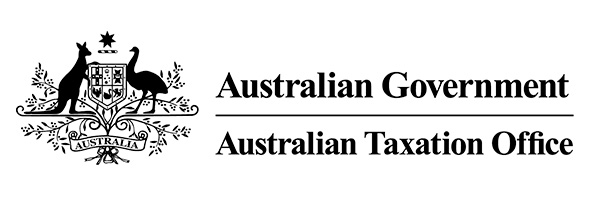
FBT is a corporate tax levied on an employer by the ATO when the employer provides its employees with non cash benefits in lieu of cash salary. The current FBT rate is 47%, being equal to the highest marginal income tax rate.
In most instances FBT is charged on the total cost of a benefit item; however a select group of benefits qualify for FBT concessions or exemptions. A motor vehicle is one such benefit that qualifies for FBT concessions.
Statutory Cost Method
The Statutory Cost Method calculates an FBT concession based on the purchase price of a vehicle. This simply means that the concession (known as the “Statutory Fraction”) is levied against the vehicle price and the FBT rate (47%) is then charged on the reduced amount rather than the full price of the vehicle.
For FBT purposes the price of a vehicle (known as the “Cost Base Value”) is considered to be the market value of the vehicle when it is originally provided to an employee as a benefit.
For purchases from motor vehicle dealers or other vendors:
Cost Base Value = total vehicle purchase price including GST less stamp duty, registration and compulsory third party (CTP) insurance.
For sale and leaseback vehicles:
Cost Base Value = current market value of the vehicle
For re-financed lease vehicles:
Cost Base Value = the value when the vehicle was originally provided by current employer as a benefit. A one-off reduction of 33.33% can be applied to the Cost Base after the vehicle has been held for four (4) full FBT years.
The Statutory Fraction is represented as a percentage. Prior to changes made at the Federal Budget on 10th May 2011 there were four statutory percentages, each applicable to one of 4 pre-defined kilometre ranges that a vehicle should travel in a given FBT year. The kilometre ranges are based on the total distance travelled and do not differentiate between private use and business use.
Changes made to the Federal Budget announced by the Australian Government on 10th May 2011 included reforms to the FBT Statutory Rates to be introduced effective immediately for all new lease contracts. All lease contracts commenced prior to 7.30pm (AEST) on 10th May 2011 were to be treated under the old (historic) Statutory Rates, however new lease contracts will see the four Statutory Rates converted into a single rate of 20% to be phased in over a 3 year period.
The statutory brackets are as follows:
| Distance travelled during an FBT year(1 April – 31 March) |
STATUTORY RATES |
||||
|
Existing Contracts |
New contracts commenced after 7:30pm (AEST) 10 May 2011 | ||||
|
Prior to 10 May 2011 |
From 10 May 2011 |
From 1 April 2012 |
From 1 April 2013 |
From 1 April 2014 |
|
| 0 – 15,000 km |
26% |
20% | 20% | 20% | 20% |
| 15,000 – 25,000 km |
20% |
||||
| 25,000 – 40,000 km |
11% |
14% |
17% |
||
| More than 40,000 km |
7% |
10% |
13% |
17% |
|
FBT Formula
Vehicle Cost Base x Statutory Rate = Taxable Value (also known as “Benefit Value”)
(Taxable Value – Post Tax Contributions) x Days Held/Days in FBT Year x FBT Rate1 x Gross Up Factor2 = FBT
1FBT Rate = 47%
2Gross Up Factor = 2.0802
For example:
Vehicle Cost Base Value = $30,000
Estimated Annual Kilometres = 20,000 km per annum
FBT Days Held = 365 days
Post Tax Contributions = $0
FBT Calculation = ($30,000 x 20% – $0) x 47% x 2.0802 = $5,866.16
Post Tax Contributions (PTC)
Recipient contributions, also known as “Post Tax Contributions” (PTC), are payments made by an employee from his or her after tax salary, towards the running costs of their salary packaged vehicle. Where post tax contributions have been made then the Taxable Value of the car fringe benefit can be reduced dollar for dollar with the amount of post tax contributions.
This provides a much more attractive outcome for any employee who salary sacrifices taxable income below the top marginal income tax rate. The current top marginal income tax rate is 47% (including Medicare levy) and applies to income above $180,000.
By adopting post tax contributions an employee can effectively replace the FBT rate of 47% with their own (lower) rate of marginal income tax. The outcome results in zero FBT costs being allocated to the total salary sacrifice budget and the remaining provisions split between a mix of pre tax deductions and post tax contributions.
During consultation Enlist will calculate the correct amount to be split between pre tax and post tax income and advise employees accordingly.
For example:
| Annual Taxable Salary $70,000 | Annual Kilometres 20,000 km |
| Vehicle Price $35,000 | Annual FBT $6,492 |
| Annual Lease Rentals $8,040 (Ex GST) | Lease Period 36 months |
| Annual Running Costs $6,000 (Ex GST) | Personal Loan Payments $8,504 (No GST) |
|
Privately Funded Arrangement |
Standard Packaging |
Post Tax Contributions |
|
|
(Post Tax Only) |
(Pre Tax Sacrifice) |
(Pre & Post Tax Sacrifice) |
|
| Gross Salary |
$70,000 |
$70,000 |
$70,000 |
| Pre tax Sacrifice |
$0 |
$20,775 |
$8,364 * |
| Taxable Salary |
$70,000 |
$49,225 |
$61,636 |
| Income Tax & Medicare Levy |
$15,697 |
$8,489 |
$12,811 |
| Post Tax Contribution |
$0 |
$0 |
$6,640 |
| Private Vehicle Expenses |
$15,044^ |
$0 |
$0 |
| Remaining Cash in Hand |
$39,259 |
$40,619 |
$42,185 |
^ Comprises loan payments under identical term as novated lease + running costs including GST
* Includes $600 for GST on Post Tax Contribution (i.e. 1/11th of $6,600)
The above example demonstrates how the employee is left with more cash by salary packaging a novated lease. Under the traditional (full pre tax) method, which includes FBT, the employee saves $1360 each year. However, by including post tax contributions (PTC) and effectively swapping the FBT rate of 47% with the employee’s marginal income tax rate of 32.5% the annual savings will increase to $2,926 and a total net saving of $8,778 over 3 years.


